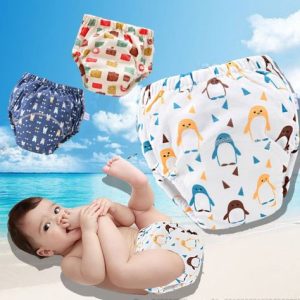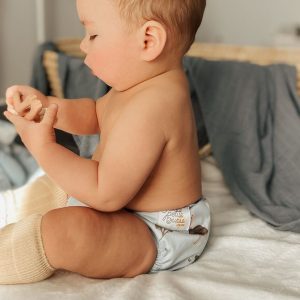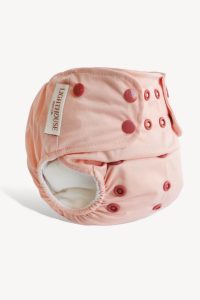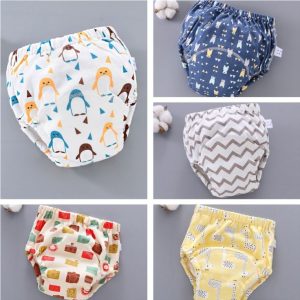Diapers are essential for keeping babies clean and comfortable. But have you ever wondered what goes into making these absorbent little wonders? This article explores the different components of disposable diapers and how they work together.
Absorbent Core: Trapping Wetness
The core of a diaper is its most critical component. This layer absorbs and traps moisture to keep babies dry. Here’s a breakdown of common materials used:
Wood Pulp:
Fluffed wood pulp is a major absorbent material. Soft and comfortable, it soaks up liquids.
Superabsorbent Polymers (SAPs):
These tiny, gel-like crystals absorb large amounts of fluid and lock it away.
Wood pulp provides initial absorbency, while SAPs trap large volumes of liquid. This combination helps prevent leaks and keeps babies feeling dry.
The inner liner of a diaper is the soft material that touches your baby’s skin. It’s typically made from:
- Nonwoven Fabrics: These gentle, breathable materials are comfortable against a baby’s delicate skin.
The inner liner allows liquids to pass through quickly, directing them towards the absorbent core. This helps prevent wetness from sitting on your baby’s skin.

Leak Guards and Outer Cover: Preventing Leaks
Leak guards and outer covers provide additional protection against leaks:
- Leak Guards: These elasticated leg cuffs around the legs help prevent leaks from running down the legs.
- Outer Cover: The outer cover is a waterproof material that keeps moisture contained within the diaper.
They work together to form a barrier, preventing leaks and ensuring your baby stays dry and comfortable.
Fasteners and Tapes: Keeping Everything Secure
Fasteners and tapes allow you to securely fit the diaper to your baby:
Refastenable Tapes: These allow for multiple adjustments to ensure a snug and comfortable fit.
Having a secure fit is essential for preventing leaks. Refastenable tapes allow you to adjust the diaper for optimal comfort and leak protection.
Modern diapers come with various features to address specific needs:
- Wetness Indicators: These lines change color when the diaper is wet, indicating it’s time for a change.
- Lotions and Liners: Some diapers contain lotions or liners to soothe skin and improve comfort.
With a variety of features available, you can choose diapers that cater to your baby’s specific needs and preferences.

Design for Performance and Comfort
Diaper design is all about creating a product that performs well while keeping your baby comfortable. Each component of the diaper plays a crucial role in achieving these goals.
Diaper manufacturers continuously improve materials and designs to enhance absorbency, comfort, and leak protection.
Diapers are a marvel of modern design, combining different materials and technologies to keep babies clean and comfortable. Understanding the components of a diaper can help you appreciate the science and innovation behind this essential baby care product.
Manufacturing Magic: Bringing It All Together
Now that we’ve explored the different parts of a diaper, let’s see how they come together:
- Giant Rolls of Materials: Huge rolls of materials like wood pulp and nonwoven fabrics are used.
- Mixing and Matching: The wood pulp and SAPs are carefully mixed to create the absorbent core.
- Shaping the Core: The core mixture is formed into a thin, absorbent layer.
- Adding the Layers: The inner liner, core, and outer cover are assembled together.
- Leak Guards and Fasteners: Leak guards are added for extra protection, and fasteners are attached for a secure fit.
- Quality Checks: Diapers are inspected to ensure they meet strict quality standards.

Special machines perform most of the diaper assembly process. This ensures consistent quality and high production volume.
Innovation at Work: Keeping Babies Comfortable
Diaper technology is constantly evolving to improve performance and comfort:
- Better Absorbency: New materials and designs are being developed to increase absorbency and keep babies drier for longer.
- Comfort for All: Diapers come in various sizes, fits, and features to suit different babies’ needs.
- Sustainability Focus: Manufacturers are exploring ways to make diapers more eco-friendly by using recycled materials or biodegradable components.
Diaper companies are always looking for ways to improve their products. Research and development teams work hard to create even better diapers for future generations of babies.
Beyond Disposable Diapers: Alternative Options
Disposable diapers are convenient, but there are other options to consider:
- Cloth Diapers: These reusable diapers are more eco-friendly but require more washing and maintenance.
- Biodegradable Diapers: These newer disposable diapers are designed to break down faster in landfills.

The best diaper choice depends on your priorities, lifestyle, and environmental concerns. Research different options to find the best fit for you and your baby.
Diapers are a clever design that keeps babies comfortable and helps parents with essential care tasks. Understanding how diapers are made and the different components involved can give you a greater appreciation for this everyday product.
The Future of Diapers: Innovation for Comfort and Sustainability
The world of diaper design is constantly buzzing with new ideas! Here’s a glimpse into what’s on the horizon:
- Super Absorbency Powers: Researchers are developing new materials and designs to create even more absorbent cores, keeping babies drier for longer stretches.
- Comfort for All Shapes and Sizes: Diapers come in a wider variety of sizes, fits, and features than ever before. This ensures a comfortable fit for all babies, regardless of their size or growth stage.
- Eco-Conscious Choices: Sustainability is a growing concern. Diaper manufacturers are exploring ways to make diapers more eco-friendly. This might involve using recycled materials in the diaper itself or creating diapers that break down faster after disposal.

Sizing Up the Process: From Raw Materials to Finished Product
We’ve delved into the different parts of a diaper, now let’s see how they transform from raw materials to the finished product you see on store shelves:
- Material Prep: Huge rolls of materials like wood pulp and nonwoven fabrics are delivered to the factory.
- Mixing Magic: The absorbent core is the heart of the diaper. Here, wood pulp and SAPs are carefully blended in precise proportions to create a super-absorbent mixture.
- Shaping the Core: The core mixture is spread into a wide sheet and then shaped into thin, flat layers. Imagine a giant cookie cutter creating the core shape!
- Layering Up: The various diaper components come together. The inner liner, core, and outer cover are assembled like a layered cake.
- Leak Protection: Leak guards are added around the leg openings for extra defense against leaks. Fasteners like tabs or straps are attached to ensure a snug and adjustable fit.
- Quality Check: Every diaper goes through strict quality checks to make sure it meets exact standards for absorbency, leakage protection, and comfort.





